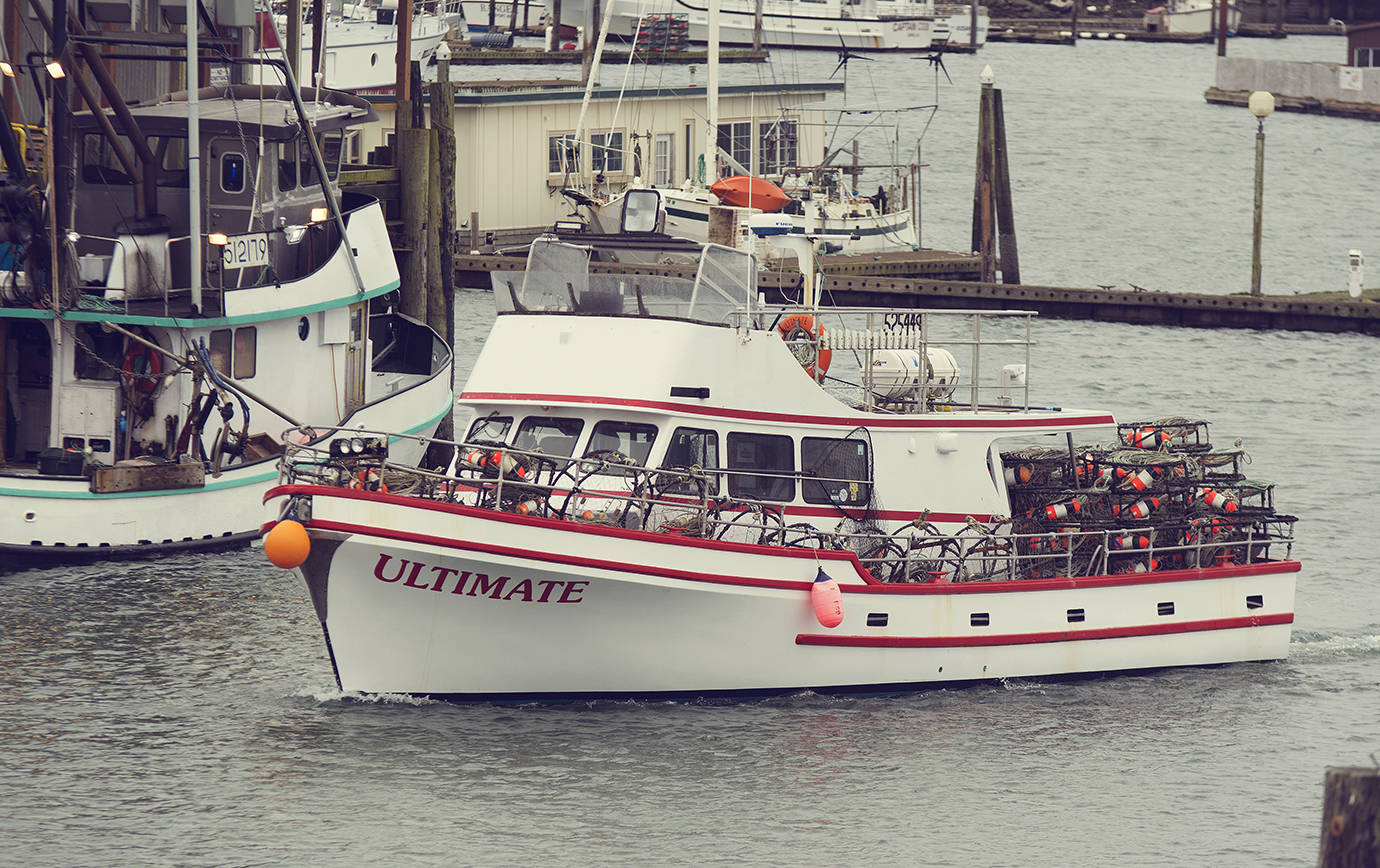Westport Marina was 10th nationwide in seafood landings in 2016 with 108 million pounds of crab, salmon, hake and other seafood landed, according to statistics compiled by National Oceanic and Atmospheric Administration.
The report shows the 2016 commercial haul bested the 2015 number of 84 million pounds.
Westport placed 14th in the nation in total value of seafood landed in 2016, with a little more than $59 million in product. That is down from $65 million in 2015, due to lower prices in 2016 for many species.
“We are extremely proud of our commercial fishing fleet and the hundreds of fishing and processing jobs they support in our region,” said Westport Marina Business Manager Molly Bold. “We are committed to providing the infrastructure, facilities and services our fishing industry needs to continue to thrive.”
The report shows Westport was tops in both value and volumes of all the other West Coast ports, excluding Alaska. Next best on the coast in total harvest was Astoria, Ore., with 94 million pounds, and next best in total value was Newport, Ore., at $48 million.
Dutch Harbor, Alaska, topped the list as far as pounds with 770 million. New Bedford, Mass., was more than $120 million ahead of Dutch Harbor in terms of value at $327 million. Nationally, fresh and frozen seafood for consumption by humans made up a little more than 75 percent of total usage. Meal and oil accounted for 19 percent, bait and animal food 3.2 percent, canned 1.9 percent, and cured under one percent.
More than 200 commercial vessels unload at Westport. Much of that catch is processed locally in five upland seafood processors. According to the Port of Grays Harbor, the industry supports thousands of jobs.
Sources in seafood processing are saying 2017 is shaping up to be a good one as well.
“This was a very good year, very busy and real steady all summer long,” said Al Carter with Ocean Gold, the largest processor in the region and one of the biggest on the Pacific Coast. “And when we’re working and fish are coming in, we put a lot of people to work. And that money trickles down into the community.”
Ocean Gold employs about 350 people when the season is in full swing. They have recently wrapped up a very successful whiting season and, like a lot of others, are gearing up for this year’s delayed crab season.
“Westport has always been a top seafood producer, but we still don’t quite get the recognition we probably should because we’re such a small town,” said Mike Cornman, vice president of Westport Seafood. “Specifically, the Dungeness crab season is starting up, and that is a high dollar value commodity.”
Even with a strike delaying last year’s Dungeness crab opener and this year’s season delayed while crabs mature after molting, Dungeness crab production has been on the rise nationwide, according to the report. In 2016, 64.2 million pounds were landed, up 166 percent from the previous season. The value of that catch was reported at $222.6 million. California topped Dungeness crab production in 2016 with 26.7 million pounds, up a whopping 760 percent from 2015. Washington came in second with 10.1 million pounds, also up from 2015 by almost 28 percent. California accounted for nearly 42 percent of total landings, Washington almost 30 percent in 2016.
Oysters are a big money item in Washington seafood. The report showed that ports in Oregon, California and Washington are responsible for more than 22 percent of national oyster production, with Washington responsible for 77 percent, or 5.7 million pounds, of the West Coast harvest.
Being recognized nationally as a top seafood port is good not just for the economy, but the identity of the City of Westport, said Carter.
“That’s what Westport is. This is a fishing town,” he said. “Not just the commercials and the processors; every boat that goes out of the marina is its own independent business with four or five employees. We have shrimp boats, though there wasn’t much for shrimp this year, we have tuna boats, and when all the stuff works well it really turns the economy.”
Pacific Coast landings (Washington, Oregon and California) data for the report are provided by the Pacific Fisheries Information Network, a joint state and federal program focused on fisheries data collection and information management for the Pacific Coast. Their statistics include data from state fish-ticket, port sampling, and logbook programs, as well as limited-entry and observer data provided by National Marine Fisheries Service.


